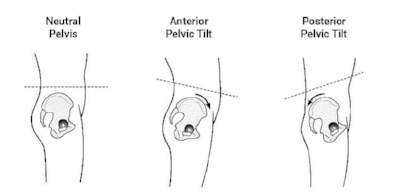Hitting for Power and Pitching Velocity… It’s All in the Hips!
“It’s all in the hips.” Not just a great line from the movie Happy Gilmore but also a great way to create more power hitting a baseball and increase pitching velocity in a safe manner. I had the great pleasure of taking the Titleist Performance Institute (@mytpi) certification course over the last few days and they spend a lot of time talking about how pelvic tilt relates to power in the golf swing. I of course immediately think of how it relates to baseball and with golf and baseball both being rotational sports they relate pretty closely. There must be something to this if TPI is currently training the top 60 golfers in the world!
Pelvic Tilt
Pelvic tilt is simply the position of the pelvis or hip bones in relation to the ground when standing. An anterior tilt can be pictured as simply an increased arch in the lower back. A posterior tilt is the opposite and decreased arch in lower back or flattening of the spine. A neutral spine is the spot right in between the two.
How Pelvic Tilt Occurs in Throwing and Hitting
When our front leg lands as we throw or our back hip rotates around as we hit our pelvis is in an anterior tilt. Doing this allow our hips and shoulders to rotate separately from each other to help create power. This leaves us in a position of lower back extension or increased arch. As we come to release point in throwing or contact point in hitting we need to get out of that arch of the lower back and move into a more neutral or even slightly posterior pelvic tilt. This allows us to use the power we generated with our lower half effectively and deliver it to the ball. Eric Cressey (@ericCressey) and Matt Blake do a great job of giving a detailed explanation of this in a blog post here: https://ericcressey.com/pitching-performance-trunk-position-foot-strike-1.
What We See in the Clinic
At Complete Game PT we have started off season screenings for area youth baseball players and we are seeing a lot of trouble with control of pelvic tilt. Whether it’s due to poor anterior core strength, poor glute strength, tight hip flexors or just poor motor control kids have a really hard time moving from an anterior pelvic tilt to posterior. This can lead to poor performance due to lack of power hitting or throwing or even worse injury to the back or hips. Problems with core control have also been related to shoulder and elbow injuries in throwers.
Pelvic Tilt Test
A simple test you can do to see if you or your athlete has trouble with controlling pelvic tilt is to stand in your hitting stride or pitching stride position and simply see if you can tilt your pelvis by arching your low back, then flattening your low back, then try to find the neutral position right in between. If you have trouble doing this stand with your back against a wall with your feet about 18 inches from the wall and try to flatten your back against the wall. If you have trouble with that next step is to try doing the same thing laying flat on your back with your knees bend and feet flat on the floor. You should be able to move from anterior tilt to posterior and back to neutral easily and smoothly.
This test turns into a great exercise to work on if you have difficulty with the pelvic tilt in any of the positions mentioned above. It is also a great example of how problems further down the chain like hip and core control can relate to poor performance or even injury further up the chain in the shoulder or elbow. If you have any questions or would like to get you or your athlete assessed give us a call at Complete Game PT 978-710-7204 or email me at gcrossman@completegampt.com.

